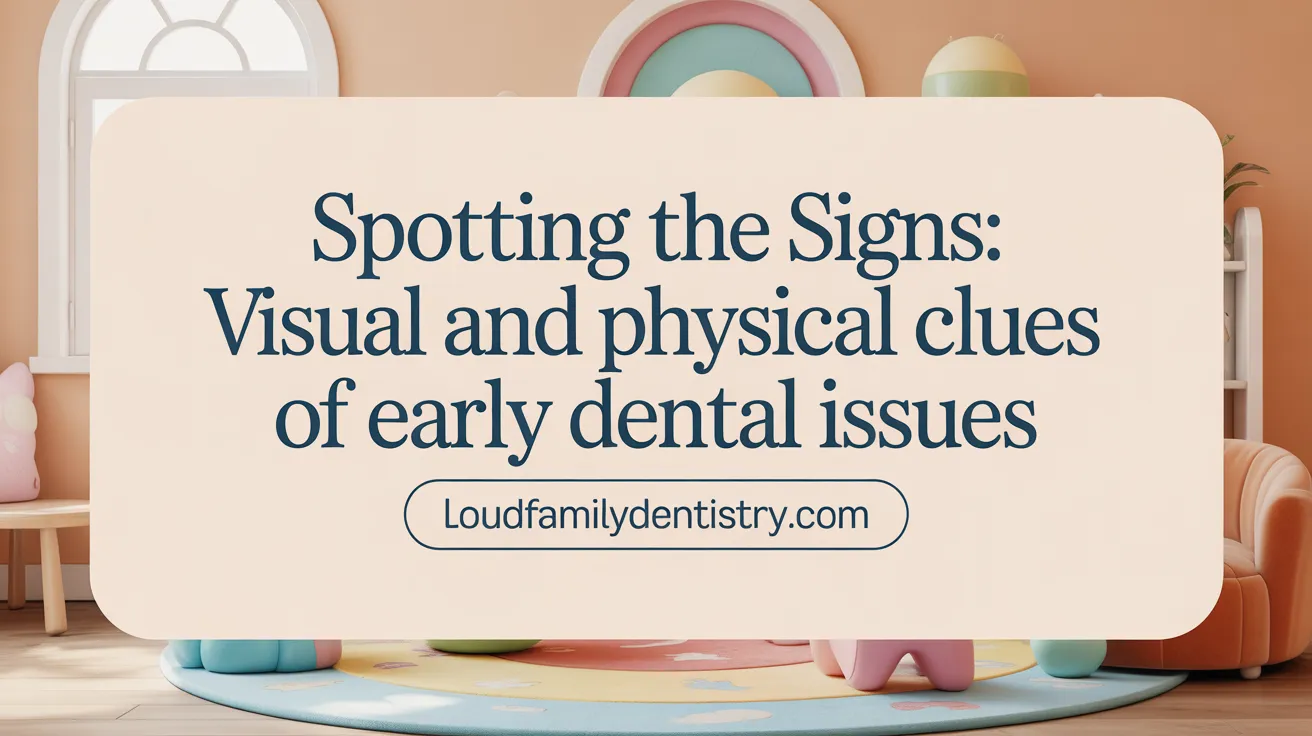Understanding the Urgency of Early Tooth Decay Detection
Tooth decay is a common dental issue that can silently develop and cause significant damage if not caught early. Recognizing the initial signs and understanding how decay progresses empower individuals to take timely action. This article explores how to detect early tooth decay, describes physical and visual indicators, the decay process, detection methods, preventive strategies, and essential oral health education to keep your smile healthy and cavity-free.
Identifying the First Signs and Symptoms of Tooth Decay

What are the early signs and symptoms of tooth decay?
Early features of tooth decay often go unnoticed; in initial stages, there may be no discomfort or obvious physical signs. The earliest indication is usually the appearance of white spots or chalky patches on the enamel, signifying demineralization and beginning decay. These spots are subtle and can be difficult to see without a dental examination.
As decay advances, symptoms become more noticeable. Increased sensitivity to hot, cold, or sweet foods and drinks is common because the enamel becomes thinner, exposing the sensitive dentin layer beneath. Patients might also experience mild or sharp tooth pain when eating or drinking certain substances.
Visible signs of decay include small holes, pits, or staining—particularly brown or black spots—appearing on the surface of teeth. These markings indicate the breakdown of outer tooth structure due to bacterial activity.
In later stages, decay can lead to more severe symptoms such as persistent toothache, pain when biting or applying pressure, and changes in the tooth's appearance. Bad breath, swelling, or bleeding gums can also occur if the decay infects surrounding tissues.
Regular dental visits are vital because early decay often lacks overt symptoms. Dental professionals use visual exams and X-rays to detect white spots and small cavities early on. Prompt identification allows for remineralization treatments with fluoride and prevents more extensive damage, reducing the need for complex dental procedures.
By understanding these early signs and the importance of subtle visual cues, individuals can seek timely dental care and maintain better oral health, avoiding pain and more serious complications later.
Visual and Physical Clues to Spot Early Cavities

What visual and physical indicators can help identify early cavities?
Detecting cavities early is crucial to prevent extensive damage and discomfort. Visually, early signs often appear as white spots or chalky areas on the enamel, indicating initial demineralization. These small patches might look dull or faded compared to the surrounding tooth surface and are generally painless. Sometimes, you might notice pits, fissures, or rough spots on the tooth, which can serve as warning signs.
Color changes are also common; brown, black, or gray stains may develop, especially in places where decay has advanced beyond the initial white spots. Visible holes or pits can form if the cavity progresses, providing a more obvious indication of decay. These signs often appear on chewing surfaces or between teeth.
Physical sensations are equally important in identifying early cavities. Increased sensitivity to hot, cold, or sweet foods and drinks often signals enamel erosion and dentin exposure. Discomfort or pain while biting or chewing is another alert, particularly if the pain is sharp or persistent.
Since early cavities can be hidden or too small to see, regular dental examinations and X-rays are essential tools. Dentists can detect those tiny, visible signs and hidden decay that might not be obvious to the naked eye. X-rays are especially helpful in revealing cavities between teeth or beneath existing fillings, catching decay before it causes significant damage.
Being aware of these visual and physical indicators, combined with routine dental visits, can help catch tooth decay early, making treatment simpler and more effective.
The Progression and Development of Tooth Decay Over Time

How does tooth decay develop over time?
Tooth decay is a gradual process that begins with the activity of bacteria in the mouth. These bacteria feed on sugars and starches from foods and drinks we consume, producing acids as a byproduct. Over time, these acids erode the enamel—the hard outer layer of the teeth—leading to initial signs of demineralization.
Early signs of decay appear as white or chalky spots on the enamel surface. These spots indicate mineral loss, but at this stage, decay can sometimes be reversed with fluoride treatments and remineralization. If these early signs are ignored, the decay advances deeper into the tooth.
As the enamel continues to break down, cavities or small holes form. These cavities allow bacteria and decay to reach the dentin—the layer beneath enamel—that is more sensitive and less resistant to decay.
With ongoing deterioration, decay can extend further toward the pulp—the innermost part of the tooth containing nerves and blood vessels. When the decay reaches this area, it can cause painful symptoms such as toothache, heightened sensitivity, and swelling.
In advanced stages, decay causes the pulp to become inflamed or infected, which can lead to abscess formation—a pocket of pus—requiring more extensive dental treatment.
Preventive measures, including maintaining good oral hygiene practices like brushing with fluoride toothpaste, reducing sugar intake, and visiting the dentist regularly, are crucial to stopping or slowing the progression of decay in its early stages.
Modern Techniques for Early Detection of Tooth Decay

What methods are effective for early detection of tooth decay?
Detecting tooth decay early is crucial for preventing extensive damage and the need for invasive treatments like fillings or root canals. Effective strategies combine traditional clinical examinations with advanced imaging technologies and innovative detection tools.
During routine dental check-ups, dentists perform visual inspections to identify any white spots, discolorations, or tiny pits that suggest early decay. They may also use gentle probing with dental instruments to detect areas that feel softer or different in texture, indicating demineralization.
In addition to visual and tactile assessments, radiographic imaging plays a vital role. Dental X-rays, especially bitewing radiographs, can reveal cavities evolving between teeth or beneath existing fillings that are not visible externally. These images provide detailed views of the internal tooth structure, helping dentists assess the presence and size of hidden decay.
Emerging non-invasive optical tools offer highly sensitive detection capabilities. Laser fluorescence devices, such as DIAGNOdent, measure fluorescence in tooth structures and can identify early demineralization before a cavity forms. Near-infrared transillumination (NIRT) uses light to detect changes in enamel's integrity, highlighting areas of early decay with minimal discomfort for the patient.
The integration of these methods allows for a comprehensive evaluation of the tooth’s condition. Combining visual, tactile, radiographic, and optical assessments with patient risk factors facilitates more accurate and early detection of decay. This proactive approach enables tailored preventive measures, such as fluoride treatments or sealants, which can halt or reverse early damage.
| Detection Method | Technology Used | Key Benefit | Application |
|---|---|---|---|
| Visual & Tactile Exam | Dentist’s eyes and probe | Immediate, direct assessment | Early signs, surface lesions |
| Dental X-rays | Radiographic imaging | Reveals hidden or early decay | Between teeth and under restorations |
| Laser Fluorescence | DIAGNOdent device | High sensitivity, non-invasive | Early demineralization detection |
| Near-Infrared Imaging | NIRT technology | Painless, deep tissue visualization | Early subsurface lesions |
By using a combination of these advanced tools and traditional methods, dental professionals can identify and address decay promptly, maintaining healthier teeth and avoiding more invasive procedures.
Preventive and Educational Strategies to Maintain Oral Health

What preventive measures can help stop or slow down the formation of cavities?
Preventing cavities involves adopting habits that protect teeth from decay. Regular brushing twice a day using fluoride toothpaste is fundamental, as fluoride helps remineralize tooth enamel and reverse early decay. Flossing daily removes plaque and food particles lodged between teeth, preventing bacteria buildup.
Applying fluoride treatments, like gels or varnishes, and ensuring sufficient intake of fluoridated water, receive professional support to strengthen enamel. Dental sealants are also effective; they create a protective coating over molars’ grooves and pits, shielding them from trapping food and bacteria.
Diet modifications play a crucial role—limiting sugary, starchy, and acidic foods, especially between meals and late at night, minimizes acid attacks that erode enamel. Regular dental visits facilitate early detection of signs like white spots or sensitivity, allowing timely interventions.
By combining good oral hygiene with professional preventive measures, the risk of developing cavities significantly decreases, leading to healthier teeth over time.
What educational information is important for maintaining oral health and avoiding cavities?
Teaching proper dental care practices is vital. Proper brushing techniques include using fluoride toothpaste twice daily and cleaning between teeth with floss or interdental brushes. Informing children and adults about the role of diet helps them make choices that support oral health.
Limit sugary snacks and drinks, especially after brushing and before bedtime, to reduce acid production by bacteria. Starting routine dental visits early—around age one—can help detect early signs of decay, such as white spots or sensitivity.
Educating about the benefits of fluoride, whether through toothpaste, rinses, or community water fluoridation, emphasizes its role in strengthening enamel. Dental sealants offer additional barrier protection for molars.
Avoiding smoking and excessive alcohol, maintaining good hygiene during pregnancy, and practicing consistent dental care habits all contribute to cavity prevention. Overall, raising awareness empowers individuals to take proactive steps toward maintaining healthy, cavity-free teeth.
Taking Charge of Your Oral Health Early
Spotting early signs of tooth decay and understanding the progression of cavities are vital steps toward maintaining strong, healthy teeth. By recognizing subtle visual and physical clues, utilizing modern detection methods, and adopting effective preventive habits, individuals can protect themselves from the pain and complications caused by advanced tooth decay. Education on oral hygiene, dietary choices, and regular dental care empowers everyone to combat cavities proactively and enjoy lasting oral wellness.
References
- Cavities and tooth decay - Symptoms and causes
- Early signs of tooth decay and cavity symptoms - Listerine
- Cavities (Tooth Decay): Symptoms, Causes & Treatment
- 6 Signs of Tooth Decay You Shouldn't Ignore
- The Tooth Decay Process: How to Reverse It and Avoid ...
- 4 Signs of Tooth Decay
- Tooth decay
- Tooth decay – what is it and how do I spot it?
